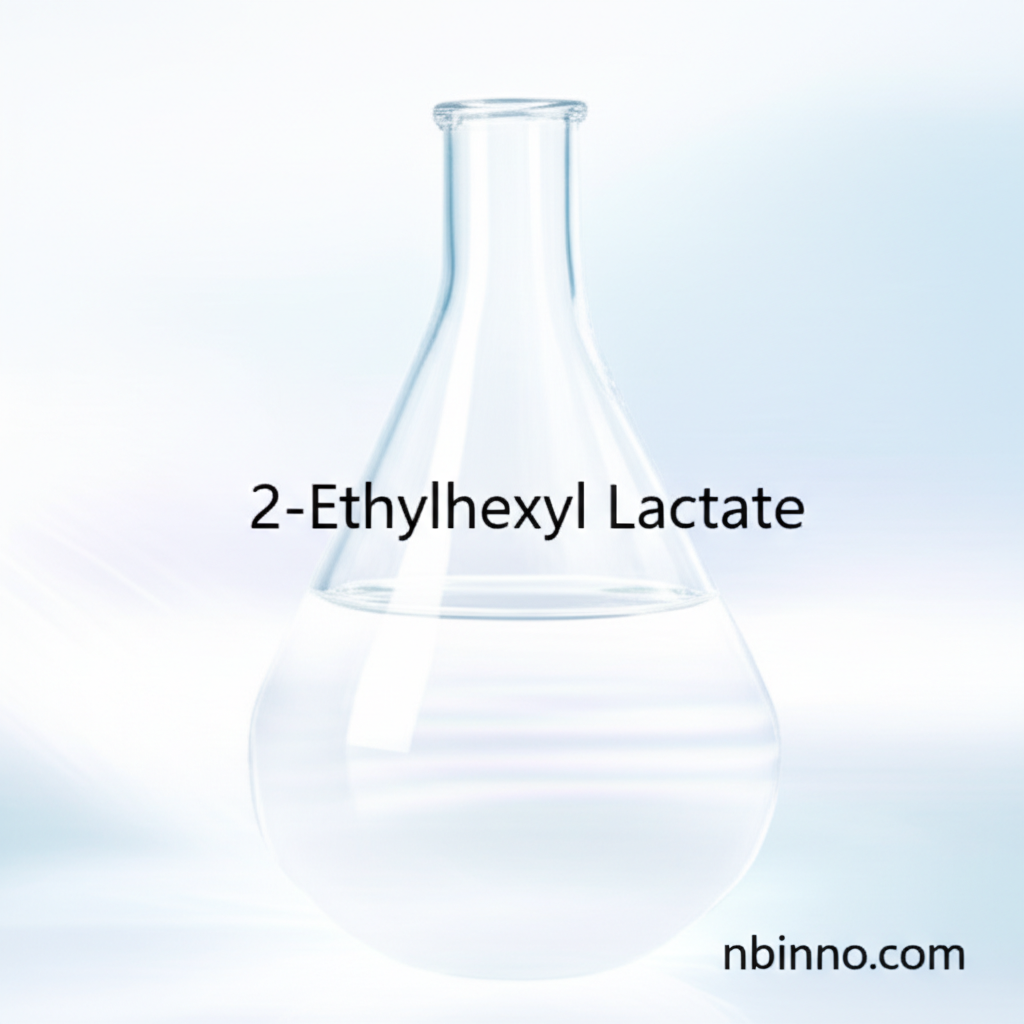2-Ethylhexyl Lactate CAS 186817-80-1: A Versatile Fine Chemical
Discover the key properties, applications, and trusted suppliers of 2-Ethylhexyl lactate for your industrial needs.
Get a Quote & SampleProduct Core Value

2-Ethylhexyl lactate
As a crucial fine chemical intermediate, 2-Ethylhexyl lactate (CAS 186817-80-1) is recognized for its dual functionality as both a solvent and a plasticizer. Its unique chemical structure makes it a valuable component in various formulations, particularly within the pharmaceutical sector and other demanding industrial applications. This compound is essential for manufacturers seeking high-performance chemical solutions.
- Leverage 2-ethylhexyl lactate CAS 186817-80-1 supplier information to secure consistent product availability for your production lines.
- Explore the detailed properties of 2-ethylhexyl lactate, including its boiling point of 243°C and a density of 0.954 g/cm3, to ensure optimal performance in your formulations.
- Utilize the benefits of 2-ethylhexyl lactate as a versatile solvent in complex chemical processes and product developments.
- Incorporate 2-ethylhexyl lactate as a plasticizer to enhance the flexibility and workability of various materials in diverse industrial settings.
Product Advantages
Versatile Application Range
The broad applicability of 2-ethylhexyl lactate makes it a sought-after ingredient. Its use as a pharmaceutical ingredient lactate highlights its compatibility and efficacy in sensitive applications, allowing for innovative product development.
High Purity and Quality
Sourcing from reliable 2-ethylhexyl lactate CAS 186817-80-1 supplier networks ensures access to high-purity material, critical for meeting stringent quality standards in pharmaceutical and specialty chemical manufacturing.
Chemical Stability
Understanding the properties of 2-ethylhexyl lactate, such as its chemical stability, is key. This allows for its reliable integration into formulations that require resilience and long-term performance.
Key Applications
Pharmaceuticals
As a pharmaceutical ingredient lactate, it serves as a vital solvent and potentially a plasticizer in drug formulations, contributing to the efficacy and delivery of active compounds.
Industrial Solvents
Its capabilities as an organic ester solvent make it useful in a variety of industrial processes, facilitating dissolution and aiding in the processing of resins and other materials.
Cosmetic Formulations
The ester's properties lend themselves to potential use in cosmetic products, where it can function as an emollient or solvent, contributing to texture and application properties.
Chemical Synthesis
As a fine chemical intermediate, it plays a role in the synthesis of more complex molecules, serving as a building block in advanced chemical manufacturing.
